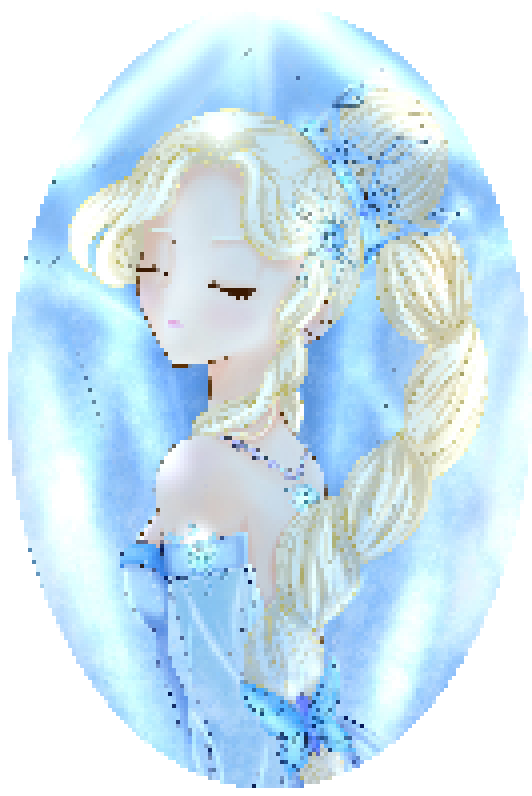Did you see Sara's little one? Big mark on his face. I wouldn't have him in the house.— Local gossip
Birthmarks are, as their name might suggest, discolourations of the skin that appear shortly after birth. They are relatively common in both
humans and
shapeshifters, yet extremely rare in
dragons. In some cases, these marks fade or disappear completely in the first few years of a child's life and cause no long-term problems.
However, in many cultures there is a stigma associated with these marks, particularly those that linger beyond childhood.
Types of Birthmark
Birthmarks can be split into two broad types - those that are caused by pigmentation and those that are caused by the
vascular system. Vascular birthmarks tend to be more dramatic in colour and size than pigmented birthmarks and, as such, there tends to be much more superstition surrounding them.
Pigmented Birthmarks
Brown Spot
The aptly-named brown spot is a light brown birthmark. They are often round or oval in shape, but can also be irregular like stains. Unlike some other birthmarks, they are not raised or textured, and are instead completely flat and smooth. Brown spots are often permanent and sometimes grow or increase in number over time. Scholars have also noticed these marks with stretch with the skin after weight gain.
Brown spot birthmarks do not cause health problems in the majority of cases, though some scholars have claimed that they can indicate a predisposition to other, more serious skin conditions.
Grey Spot
A grey spot is the name given to a blue-grey birthmark. These are often large and irregularly-shaped, and are most commonly located on the lower back or the buttocks. Like brown spot birthmarks, they are flat and have no texture difference from regular skin. They tend to disappear before the age of five, and extremely rarely last beyond puberty.
In some cases, a grey spot birthmark has been mistaken for bruises, leading some children to be erroneously removed from their parents' custody. Almost all of these cases are resolved happily when the 'bruise' fails to fade. These marks are considered to be entirely benign and cause no problems for the child.
Mole
Moles are relatively small marks, ranging from light brown to black; the darker someone's skin, the darker any moles tend to be. Although they are usually round in shape, some can present irreglarly. Moles can be flat, but are often noticeably raised and lumpy. Whilst one or two can be present at birth, more often appear over the course of a person's life.
Whilst moles in general are considered benign, occasionally one can turn malignant. When this happens, the mole can change in size and colour, and start to bleed. Scholars are currently unsure what causes this change, though theories include too much sunlight, not enough sunlight, impure thoughts, and poor diet.
Vascular Birthmarks
Birth Bloom
A birth bloom is a pink, red, or light brown mark that appears shortly after birth, most commonly on the forehead, knees, or back of the neck. These marks can be quite large and are often irregular in shape. Birth blooms are the most common of all the birthmarks, present in nearly half of all births.
It has been noticed that the birth bloom becomes more visible when the baby is crying or distressed, though scholars are unsure why this is the case. These marks usually disappear a few months after birth, and almost always by the age of three. Birth blooms on the back of the neck tend to linger longer, and occasionally remain indefinitely.
Wine Stain
Wine stains are generally considered to be the most dramatic of the birthmarks and, as such, tends to be the birthmark that attracts the most suspicion. At first, the mark is often light pink in colour, but deepens to a dark red or purple as the person grows. In adulthood, skin thickening and the development of bumps and texture can occur.
A wine stain birthmark can appear anywhere, though most often on the face or upper body. Frequently, the stain is confined to one side of the body, which remains baffling to scholars. These birthmarks do not fade with time; instead, they usually become more pronounced.
Berry Mark
Named for its resemblance to a berry, this birthmark is a swollen red mark that appears within the first few weeks after a child is born. In some cases, the mark is present from birth, though some scholars argue this presentation should be categorised differently. For the first year, this mark tends to grow rapidly, becoming puffier in appearance. Depending on the placement of the mark, they can be considered disfiguring.
Most berry marks shrink and resolve themselves before the child's tenth year. Those that don't have been linked to medical complications later in life.
Cultural Significance
History
In
Fluvansii in 4620
EA, Princess
Aranya was born with a wine stain birthmark across half of her face. This brought a great deal of shame to her
royal family, as they believed that the mark was divine punishment for their failed
war against
Ahebran in the
Sea of Gold. The family did their best to hide Aranya's condition from outside eyes, becoming reclusive and not letting themselves or their children be seen without a
mask. When questioned, they claimed that this was the will of the
gods. To this day, all members of the
Fluvansiin royal family wear a mask when out in public.
Mythology
Across
Etrea, there are many different myths and superstitions around the origin of birthmarks. Though scholars have been able to scientifically explain some birthmarks (and have strong theories about others), it has not been enough in many places to quell the rumours. Most myths is not generally limited to one type of birthmark, though some birthmarks are more prevalent in some cultures than others.
One of the most common superstitions across the world is that birthmarks are caused by something the mother did during the pregnancy. Depending on culture, this can range from the mundane (drinking alcohol, dancing, resting her hands on her belly) to the specific (eating human flesh, holding a
chicken). Mothers who have children with birthmarks can find themselves shunned by the community.
Another common superstition across cultures is that a child who has a birthmark has been touched by evil. In some cultures, this is seen as the mother's fault, as it is believed she must have taken some action to welcome the evil inside of her. In other cultures, the mother is seen as a victim, or that the rituals of protection surrounding the pregnancy were not strong enough. In most places, children seen as marked by evil go through a variety of cleansing ceremonies, and they are believed to have worked when the birthmark fades from the skin. Other cultures do not take this risk, and the children are put to death or left outside at the mercy of the elements.
In some places, birthmarks are seen as evidence of a previous life. They can be considered to be marks of a violent death or as evidence of certain deeds committed. When these marks fade, it is taken as a sign that the child has fully settled in to their new life.




















I really like where you are going with this! I think (?) you are yet to write more, so if that is the case, could you comment on my article once you have finished the article? I'd love to come back and read it once you have done some more work on it. If it is not, my apologies! The reason I think it may be unfinished is because there is a COUNTRY placeholder and the mythology section does not have periods.
Yep, definitely in a draft state - I'm not notifying or sharing until it's much more done! I'll try to remember to let you know when it's finished! :) Thank you! <3
Explore Etrea